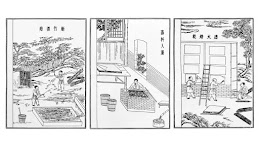I have never really been big on the news, especially in the past few years. You would think that being an adult in college would imply that I want to know more about what’s going on in the world, since I’m about to be “entering” it after my college graduation. However, that’s not exactly my case. I unfortunately tend to associate “news” or “media” with words such as as negative, overwhelming, distrust, bias, and beyond (as in beyond my influence). Regardless of this, the news is still very informative, consistent, and efficient, as it’s crucial for a society to stay informed.

Allsides is a news site dedicated to providing multiple perspectives on issues to expose bias. My English College Writing and Public Speaking class introduced it to me during my freshman fall semester. We did many assignments with it, and it was incredibly eye-opening to see the contrast between varying news outlets. Allsides clearly labels each news story as either left-leaning, center, or right-leaning, presenting us with different people speaking on the same issue. It helped me learn how to detect news bias, rather than subconsciously knowing that “news can be biased.” I would recommend Allsides as a place to explore news further. Providing balanced news coverage, media bias ratings, and civil dialogue opportunities can help strengthen society with diverse perspectives and real conversations.

One of the places I could likely receive more direct news from is The Wall Street Journal. It’s a relatively neutral source that’s full of business, economic, and public health information. I remember how during the pandemic, and even now, it was always up-to-date on numerous topics regarding the virus. These aspects included multiple vaccine updates along with economic and social impacts. Its reputation of relevance to the business and financial world is evident and can be beneficial to those interested in these fields. The Wall Street Journal is definitely recommendable to them and others. It provides a more in-depth look at economics on top of their editorial section and solid news coverage.

Fox News is another great place I could likely receive news. I really like the layout of their website, they have a central section that highlights top news stories and easy access to exclusive clips on the left and COVID information on the right. Along the top of their page, they have almost like a bookmark bar that provides easy access to information you’re interested in along the top of their page. These features make for easy navigation and accessibility. They also have a wide variety of reporters, a well-known one being Tucker Carlson (he’s one of the few I know of). I like how he can throw in comedic comments while still successfully delivering information to the public. The Fox News website also has a live link that you can click on whenever you want, so you can go watch your favorite reporters and receive informative news freely.

Instagram is a great platform to receive quick and brief news on an alternative route. However, caution does come when utilizing it to gather information. As just an average Instagram user, I can create almost any kind of content I want. Videos, stories, likes, comments, posts, reposts, etc. are all actions anyone can take. Instagram allows you to see news from multiple angles of every story like Allsides, just in a less formal way. It’s incredibly convenient and accessible but also catered to each user. Once we receive news we like and let Instagram know we like it, we’re immediately fed more information from that source or one similar to it. This strategy maintains our interest as users, keeping us on Instagram longer. Props to Insta and other social media platforms for these tactics. Overall, Instagram is an efficient and informative source, but staying attentive to what we consume is essential.

Listening to a news channel through satellite radio is also a great way to receive information. Satellite radio is beneficial to have in general, as it allows you to receive a clear signal from wherever. Whether in the middle of nowhere or an urban city sprawl, you can still listen to hundreds of channels anywhere. This source is perfect for those who have a long drive to work or drive as part of their job and want to stay informed on public events. I personally prefer music over regular talking on my drives, but I know my parents and many others utilize their satellite radios as a convenient way to receive news.

























